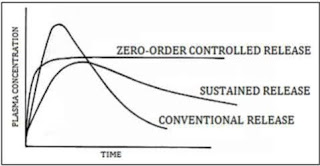What exactly release is? What are the ways by which you can modify release and obtiitra desired rate of release-describe briefly.
In the context of pharmaceutical technology, release refers to the amount of a drug that becomes available to the body over time after it is administered in a particular form, such as a tablet or capsule. Controlling the rate of release is important for achieving optimal therapeutic effects, avoiding side effects, and maximizing patient compliance.
There are several ways by which the release of a drug from a dosage form can be modified to achieve a desired rate of release:
Formulation: The choice of excipients and their concentrations can affect the rate of drug release. For example, adding hydrophilic polymers to a tablet can slow down drug release by forming a gel layer around the tablet, while adding surfactants can enhance drug release by reducing surface tension.
Particle size reduction: Reducing the particle size of a drug can increase the surface area, leading to faster dissolution and release. This approach is commonly used for poorly water-soluble drugs.
Coating: Applying a coating to a tablet or capsule can modify the rate of release. For example, a delayed-release coating can be used to prevent drug release in the stomach and ensure release in the intestine.
Complexation: Forming a complex between a drug and a polymer can modify drug release. For example, ion exchange resins can be used to control drug release based on pH.
Osmotic systems: These systems use osmotic pressure to control drug release. For example, an osmotic pump can be used to deliver a drug at a constant rate over an extended period of time.
Liposomes and nanoparticles: These delivery systems can control drug release by encapsulating the drug and releasing it over time as the particles are broken down by the body.
Overall, modifying drug release is a critical aspect of pharmaceutical technology, and there are several approaches that can be used to achieve a desired rate of release depending on the specific drug and patient needs.



Comments
Post a Comment
Thanks